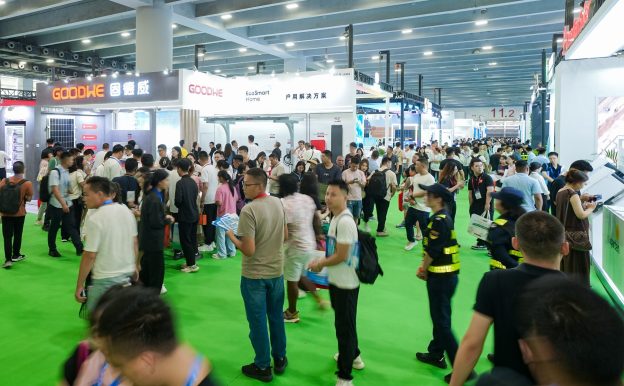The U.S. Sees High Increase in Installations
According to the EIA, energy storage installations in the U.S. saw a significant increase in April compared to last year. In April alone, the U.S. installed 523.3 MW/1129.9 MWh of energy storage capacity, marking a 195.6% increase year-on-year. From January to April 2024, the U.S. added 1759.3 MW/3089.1 MWh of energy storage capacity, representing a year-on-year increase of 186.3% in power capacity and 830.5% in energy capacity.
The U.S. added new storage capacity

Planned Energy Storage Installations in the U.S.

Following a slow period in January and February, installations picked up significantly. As of the end of April 2024, the U.S. had deployed a total of 32.95 GW of energy storage systems (ESS). Of this total capacity, installations with more than 50% capacity utilization accounted for 17.9%, up from 8.5% in September 2023, showing a notable increase to 9.4%.
In the past two months, the construction of energy storage projects has increased, while the backlog of projects has decreased due to a faster approval process. In March, the U.S. energy storage market returned to its normal pace, with many large-scale projects becoming operational. Additionally, most projects that missed their scheduled operational dates are expected to come online in April. As of April, installations in the U.S. have significantly increased compared to last year. We anticipate that the U.S. energy storage market will continue to see high installation rates throughout 2024.
In recent years, installations in the U.S. energy storage and PV markets have increased simultaneously. However, the recent tariff policy is expected to impact PV installations. This has raised concerns that the slowdown in solar installation growth could affect the growth of utility-scale installations in the U.S. Currently, independent energy storage accounts for 67% of the utility-scale projects planned for grid connection in the United States from Q2 to Q4 2024. For instance, in Texas, where the growth rate of independent energy storage is notable, analysis of revenue and demand sources indicates that independent energy storage system (ESS) installations will not be affected by the solar installation growth rate in the short to medium term.
The Installations of Residential ESS in Europe Decline
In Europe, demand for residential storage has weakened as the region continues to deplete its inventory. For example, the German market is experiencing a negative growth trend in new residential storage installations. From January to April 2024, new residential storage installations declined year-on-year, with a specific decline noted in April.
According to statistics from ISEA and RWTH Aachen University, Germany installed 1,550 MWh of residential storage capacity from January to April 2024, a decrease of 12.19% year-on-year. During the same period, new installations of commercial and industrial (C&I) energy storage reached 56.2 MWh, down 1.92% year-on-year. Conversely, utility-scale storage added 165.79 MWh of new capacity, an increase of 55.67% year-on-year.
Specifically, in April, new installations were as follows: residential storage at 338 MWh (down 9.63%), C&I storage at 12.3 MWh (down 12.14%), and utility-scale storage at 35 MWh (down 4.37%), totaling 385.3 MWh (down 9.26%).

The data show that the capacity of new installations remains lower than in previous years, and the current demand for energy storage in Europe is still uncertain. Europe continues to consume its residential storage inventory, which is expected to return to normal levels by the end of Q2 or Q3 2024. Additionally, the demand for solar inverters is projected to improve starting in the second quarter, driven by increasing demand from emerging markets. As a result, shipments have significantly increased compared to the previous quarter, with domestic exports reaching 4.93 billion yuan in April, a 15.2% rise from the previous month, rebounding to the levels seen in September 2023.
The number of new entrants in the industry is rising, intensifying competition for market share in the energy storage sector. Consequently, the overseas market, being more profitable, is becoming a crucial battleground for many Chinese companies looking to expand their energy storage business. In the future, we can expect more shifts in the competitive landscape and heightened industry competition.
In the development of the industry, China’s energy storage enterprises have established an extensive industrial chain, encompassing almost all aspects of the industry and various types of products. Chinese companies have built a mature lithium-ion battery-based core for the energy storage industry, with numerous large-scale production bases. This provides them with significant competitive advantages in terms of the industrial chain and cost efficiency. Additionally, Chinese enterprises primarily utilize lithium-iron phosphate (LFP) batteries, which offer superior cost control, performance, safety, and technological evolution.
Regarding overseas markets, major regions such as the United States, Europe, and Australia are the primary focus. In terms of application scenarios, beyond the highly advantageous residential storage market, leading enterprises are also accelerating their deployment in utility-scale grid-side and power-side markets. Additionally, these companies have evolved from single-product suppliers to comprehensive solution providers, offering integrated development of multiple products.
With the global energy storage market booming, China’s energy storage enterprises are well-prepared. They leverage their strengths to research and develop a diverse array of high-quality products. Simultaneously, leading companies are working to establish robust channel systems, enabling rapid expansion in key regional markets. Currently, China's energy storage industry is still in its early stages. As such, various aspects, including the industrial chain pricing, technical equipment, expertise, and standards, need further improvement. As the industry braces for change, only those manufacturers who excel in planning and strategic layout will seize the opportunities to stand out in the competition.







